If you want to make money from your CBD website, it’s not as simple as launching a Shopify or WooCommerce store and generating sales. If it were that simple, no one would be opening retail cannabis shops.
Building an online CBD storefront and making one profitable are two VERY different things. Your CBD website design should be appealing, no doubt. But it also needs to make money.
It’s still a common mistake to focus on a cannabis website design that looks good rather than one that maximizes your conversion rates and sales.
Today we’re going to share the top ten CBD website design flaws that hurt sales and profitability…and how to correct these mistakes.
1. Stock Photos
A picture says 1,000 words. Yet too often stock photos are used on new CBD sites.
Royalty-free pictures can be a HUGE turnoff to potential customers. Why? Oftentimes, cheesy CBD stock photos:
- Inadequately represent your brand.
- Detract from your websites look, feel and personal touch.
- Damage your credibility.
People have short attention spans. And there’s no doubt that images are a powerful way to quickly grab visitors’ attention, increase engagement, and drive action.
But stock photos are NOT the solution.
Instead, you should invest in a 360-degree view camera or pay a bit extra for custom imagery that showcases your brand and product.
Using professional photos will separate your brand from the sea of hemp and cannabis site designs out there today. And, in turn, boost your sales.
2. Lack of Quality Assurance
CBD consumers aren’t like recreational cannabis users. And as the market grows, the CBD user base is becoming even more cautious with their purchasing decisions.
Yet too often CBD website content fails to communicate value and inspire customer confidence. This is even true for some of the best cannabis websites out there today.
In particular, many CBD product descriptions offer insufficient or misleading information regarding testing methods and results. Instead, your site design should address the pain points of the CBD customer profile and buyer persona.
If you’re not upfront and thorough, you can miss out on savvy customers who know how to shop for CBD.
So how can you enhance customer confidence in your quality control and assurance? Consider incorporating the following in your product descriptions and CBD website designs:
- The details of your certificate of analysis (COA) test results.
- Your COA information and compliance with ISO 17025 standards.
- Showing whether your testing methods are AOAC, AHP and/or USP validated.
- Exact amounts and dosages of CBD content and other ingredients.
- Where and how the hemp or cannabis plant was cultivated and extracted.
Below is a decent example of quality assurance and lab testing language.

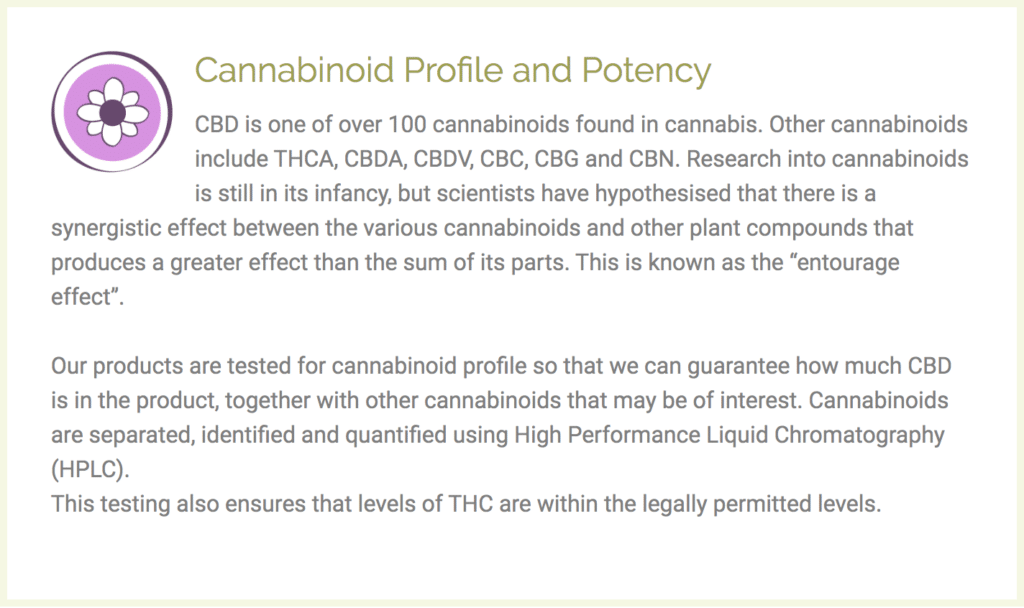
But the more specifics you provide (across your entire site) about the validity of your products and the exact laboratory analyses conducted, the better.
Beyond adding quality assurance info, you should also avoid sweeping health claims.
For example, saying that you use “CO2 extraction” versus chemical solvents doesn’t necessarily make your product safer or healthier than the competition. As you know, some CO2 extraction methods still use solvents.
So, in short, be upfront, transparent and original with your product descriptions.
3. Homepage Sliders
Now for one of the more interesting (and misunderstood) CBD website development mistakes: the carousel or homepage slider.
Homepage sliders are one of the most common website design flaws. Why?
- Poor Search Engine Optimization. CBD web developers often design carousels with multiple H1 headings, low-quality (aka “thin”) content, and poor load speed. Each of these design flaws hurts your website ranking and your chances of gaining a steady supply of customers.
- Poor Usability & Conversion Rates. Hardly anyone clicks on carousels. They also push important, click-worthy content below the fold of the page.
Sliders are commonly recommended on CBD website templates and pre-built CBD themes. But unless you know how to effectively scale, design and optimize them, it’s best to steer clear of carousels.
4. Not Allowing Good AND Bad Reviews
Transparency is key to selling CBD.
So allow reviews on your CBD website—both the good AND the bad.
If you receive a negative website review, respond to it to address the issue.
Doing so enhances the transparency of your product and services, allows you to manage and maximize word of mouth, and stimulates real human connection.
5. Service Inefficiencies
It’s the little things that go a long way with customers.
But oftentimes, CBD oil templates and ready-made hemp themes lack simple service efficiencies that can turn casual browsers into loyal fans.
Customer service features such as FAQs, support articles/posts, and a chat box (whether its an automated chat or real human) help customers quickly get the answers they need.
Including such customer-friendly service efficiencies on your CBD website can mean the difference between making and losing a sale and long-term customer.
The messaging and design of your checkout page should also be optimized for service efficiency. Failing to do so can result in lost customers and revenue.
Even the best website builder for CBD products and standardized CBD website templates STILL contain inefficient design features. Just a few examples include forcing customers to enter repeat info at checkout, advertising other products before closing the sale, and making it difficult to determine shipping costs and taxes.
Instead of making these same design mistakes, it’s critical to take service efficiency into account across the entirety of your cannabis website. If you want to build a successful CBD site and optimize customer retention, focus on keeping things streamlined and user-focused.
Emphasize things like the speed of delivery. You may even consider offering free shipping and loyalty benefits.
To achieve the best CBD oil website design possible, you have to account for the little things that mean a great deal to customers. Doing so will boost your conversion rates and revenue.
6. Slow Page Speeds
The longer your CBD website design takes to load, the more visitors you’ll lose. Google and other search engines recognize this.
In fact, page speed is one of the MOST important determinants of your website’s domain authority and ranking on search result listings.
Users don’t like waiting around for a website to load—regardless of how sleek it looks.
So avoid using full-bleed, mega-sized images.
You should also follow site speed best practices such as reducing page redirects, leveraging browser caching, and using tools like GTMetrix to determine performance opportunities.
7. Poor mobile optimization
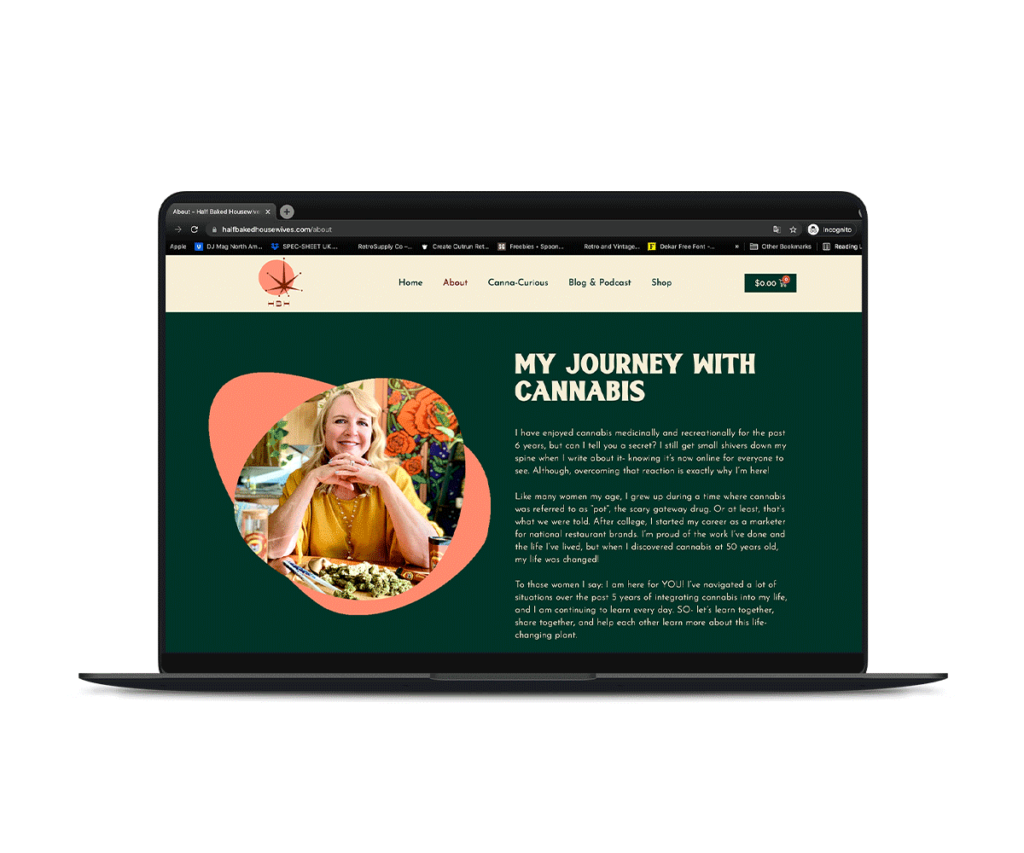
Your site needs to be designed for mobile use. In fact, Google now uses the mobile version of your content to determine indexing and ranking.
Because of Google’s mobile-first indexing algorithm, which is only becoming more and more of a priority for web design, your site needs to adjust to any screen size.
This means you need a responsive CBD website design.
A responsive website means the content displays well AND loads lightning-fast whether someone is using a mobile phone, tablet or any handheld device.
If you have a poorly optimized mobile experience or a website that lacks responsiveness, users are more likely to abandon your CBD eCommerce site and not make a purchase.
Just look at the cross-device purchase diagram below.

The majority of customers will reach your site via mobile and then continue the purchasing journey on another device.
As such, it’s vital to ensure customers have an excellent experience on your website no matter the device they’re on. So if you’re using a pre-built dispensary website template or custom CBD website template, be sure to check that it’s indeed responsive and mobile-friendly.
Search engines also want to serve up relevant CBD websites that provide the ultimate experience for the user.
So having a slow site and bad mobile design will destroy your search engine optimization (SEO) and ranking on search engine result pages (SERPs).
Speaking of SEO, an unfindable and unusable website is also detrimental to profitability. So let’s segway into the next common CBD website design flaw: lack of usability and findability.
8. Lack of Usability and Findability
When search engines can’t find and index the content of your website, you won’t do well. You also won’t rank well when customers don’t want to use and engage on your site.
So keep your content relevant, fresh and engaging. Unique content attracts visitors and increases the time they spend on your site.
And when this happens, search engines will reward you because they’ll recognize you’re killing it with your CBD website marketing.
So how can you increase the amount of time visitors spend on your site?
In-depth guides and “how-to” manuals are fantastic ways to get folks to visit (and stay on) your site. They also generate backlinks, referrals and social shares, which can all help you dominate Google.
In addition to including excellent content, each page and post on your site should target a keyword. Selecting a focus keyword requires digging into the research and the latest search trends.
But don’t stuff the page with your focus keyword. Remember, search engines prioritize websites that maximize user experience (UX).
Would you want to read something that repeats the same word or phrase over and over again? Of course not.
You should also optimize on-page elements within the design of your eCommerce CBD oil website template, hemp WordPress theme, or whatever platform you’ve selected as the best CBD website builder for your business.
Doing so will surely improve your site usability and findability.
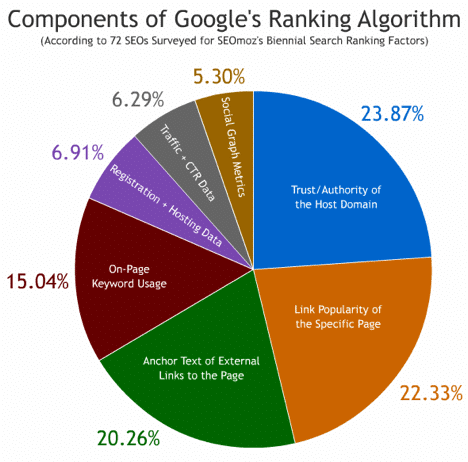
Here are some essentials to focus on to get search engines and visits to your cannabis website:
- Including descriptive words in image ALT attributes.
- Avoiding duplicate content, title tags, or header tags.
- Creating keyword-friendly URLs (also known as “speaking” URLs) and page meta descriptions.
- Never, ever, use iframes to show content.
- Ensuring your SSL certificate is up-to-date so your CBD website is secure (HTTPS).
- Create and submit an XML sitemap to Google Search Console and Bing Webmaster tools.
9. Unclear Messaging & Calls-to-Action
Using too many calls-to-action (CTA) buttons or text links can often do more harm than good. The same is true for muddled messaging.
Users need to be guided in a decisive direction.
Yet many new cannabis websites (and even full-scale CBD website developer and marketing teams) fail to point customers down a clear path.
Instead, focus your CTAs and messaging on one main goal to drive profitable customer action. Each page of your site should be dedicated to one action you want customers to take.
For example, you can inspire users to explore the details of your products, submit a contact form, subscribe to your email communications, or browse your success stories.
But stick with one focus per page and hammer it home.
10. Unorganized Navigations
Similar to muddled messaging and CTAs, having illogical or unclean navigations within your cannabis web design is one of the first ways to lose potential customers.
The simpler the organization of top navigations, sidebars, and/or footer navigations on your site, the better.
An easy-to-navigate website flow that clearly explains what you do and how to get in contact with you speak VOLUMES about your brand and quality of service.
A functionally intuitive cannabis website is also aesthetically attractive to potential customers.
Getting Started with Your CBD Website Design
Many of the missteps that kill your sales and revenue can be easily tackled by enhancing the user journey and how you engage your audience.
Optimizing user experience and engagement with an effective CBD website design will help you better persuade your audience and ultimately maximize your long-term profitability.
But the elements of persuasion don’t begin and end on your product pages. The goal is to feed your CBD marketing and sales funnel, right?
To accomplish this, every feature of your CBD oil web design should address every possible objection to making a purchase.
In other words, the content and design elements on your homepage and landing pages to the end of your checkout process should be persuasive and build trust in your brand.
If you need help with CBD website hosting and design, get in touch with us. We’ll help you build and optimize your CBD website to close more sales and grow your profitability.

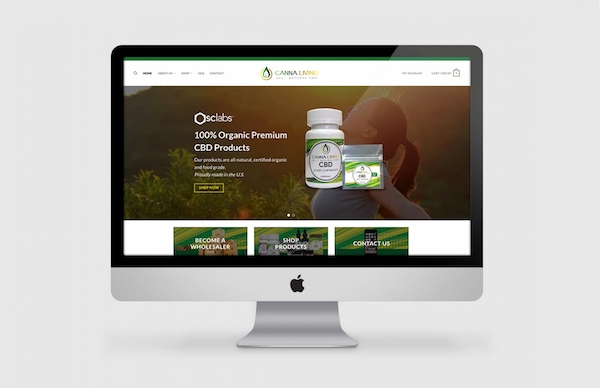
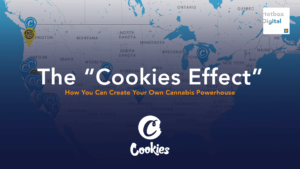
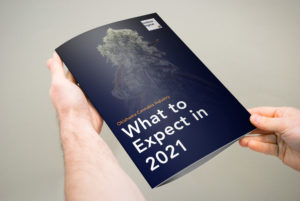


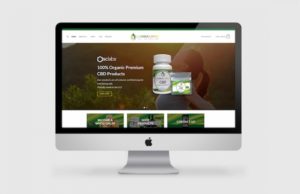

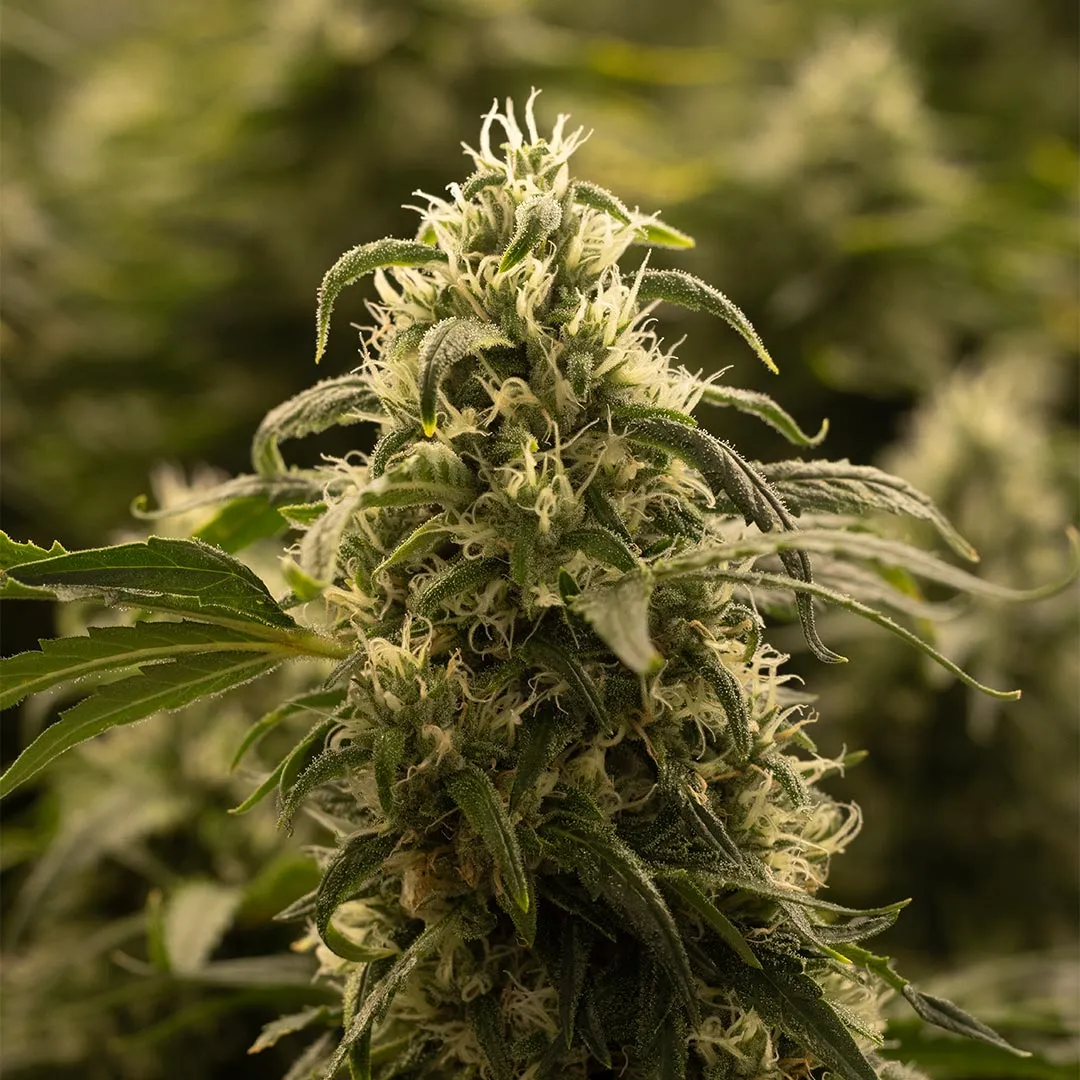
One Response
Appreciating the time and effort you put into your website and detailed information you present.
It’s good to come across a blog every once in a while that isn’t the same unwanted rehashed material.
Excellent read! I’ve saved your site and I’m including your
RSS feeds to my Google account.